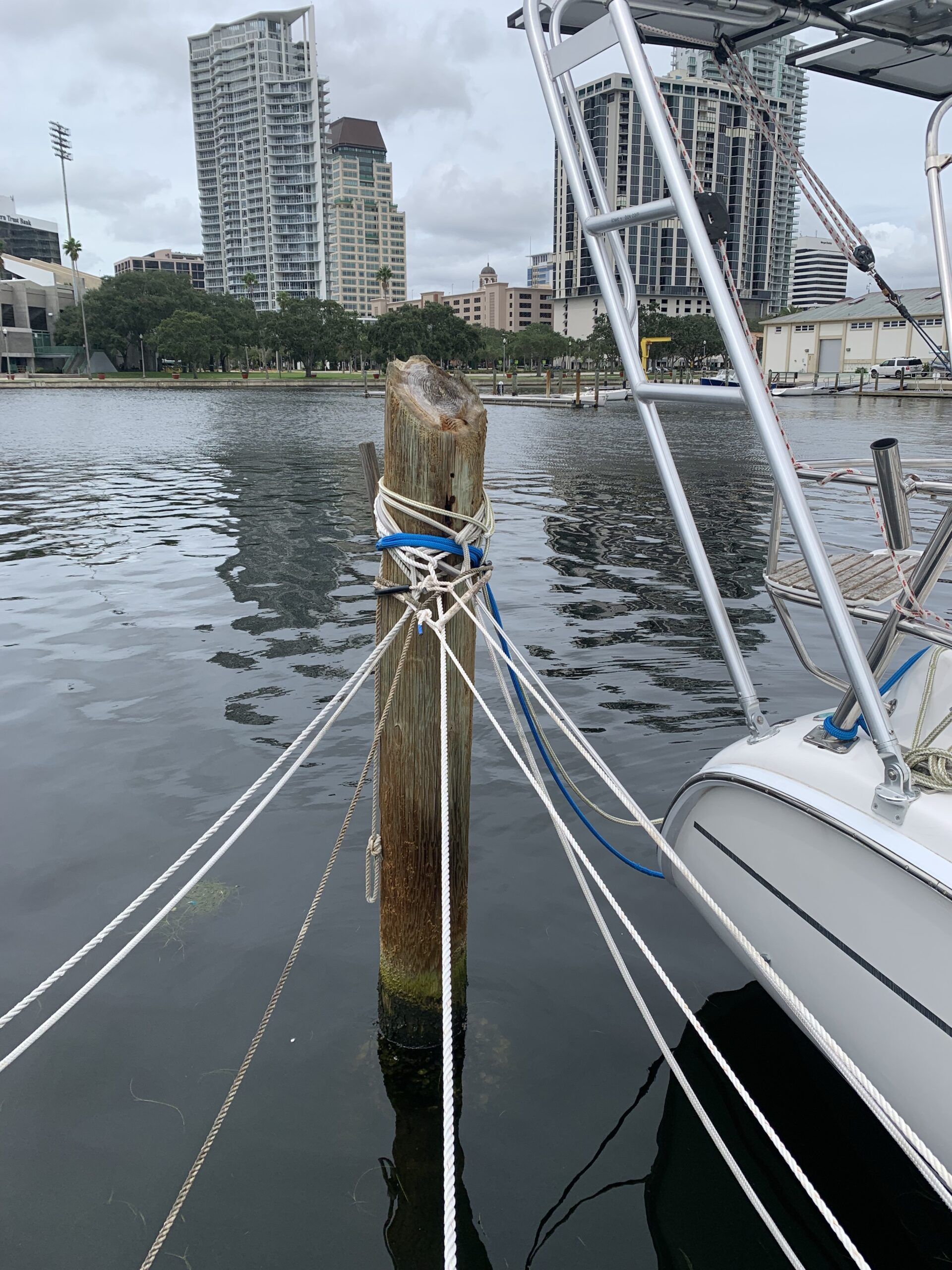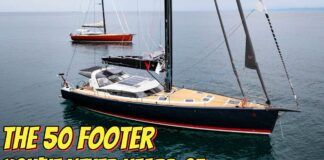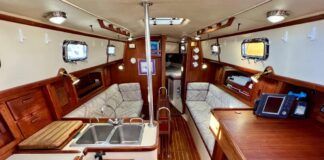My old home island of Guam got whacked by a Supertyphoon Mawar on Wednesday. Power is still out, so still no word from friends. I’m not too worried about them. Since typhoons are a risk on Guam during nearly every month of the year, the Micronesian island has been pummeled many, many times, including while I was there living aboard. Boaters on Guam have learned what to expect and are generally well-prepared. Cruising boats have access to a well-tested hurricane refuge with a four-point mooring system, or they can strap themselves into couple of backwater canals like the one we took refuge in during Supertyphoon Paka in December 1997.
With the official June 1 start of 2023 Atlantic Hurricane season fast upon us, many veteran boaters are digging out their extra dock lines and fenders and formulating their strategy for the dealing with the next Big One. For owners of marina-bound boats like me the big question is simple: “Should I stay or should I go?” (There are, of course, a number of boaters who have yet to give hurricane season second thought, despite the havoc wreaked by Hurricane Ian last year in Southwest Florida.)
More often than not, during conversations with the experienced sailors who contribute to Practical Sailor, the phrase “Do as I say, not as I do,” comes up. The truth is, many of the practices followed by longtime cruisers would be irresponsible to promote. Some of these practices are extremely risky, and these are good people who don’t want to risk someone misunderstanding their advice, or applying it to situations where it isn’t valid.
One of the classic examples of “do as I say, not as I do” situations regards how to secure your boat for a tropical storm. Along with many of the contributors who’ve cruised for years while living aboard, I’ve hunkered down for a couple of big storms, the biggest being Paka.
I recounted that episode briefly in an editorial a while back, but did not go into a whole lot of detail. One of the things that led to that decision was the fact that our boat, a 31-foot Atkin ketch, was moored in a narrow canal in the U.S. Navy’s old submarine base Apra Harbor. The former site of a small vessel repair center, it was a hurricane hole where boats had long sought refuge from powerful typhoons.
The canal was narrow and without concrete bulkheads, making for a “soft” landing should some of the 12 lines we used to secure Tosca fail. It was relatively well protected from wind by trees and buildings. We could secure the boat in the middle of the canal, at least one boat length from the shore. The depth of the canal was only about two feet beneath the keel.
We could have and should have gone to stay with friends in one of the concrete bunker-type homes that are typical on Guam, an island that is routinely threatened by typhoons. Instead, we reasoned, we might be able to prevent some harm to the boat by adjusting lines, fending off boats – whatever.

When the storm finally struck, it was clear how foolish we were. With sheet metal and coconuts flying in 195 mph winds, to go on deck would have bordered on suicide. And the only real risk to the boat was something we could not avoid – the entanglement of our rigging with the boat in the adjacent “slip,” which had a different roll period from our own boat. As each of us rolled as far as 45 degrees in the wind, the spreaders of the CT 41 next to us would cross with our shrouds, creating a frightening screech. I tried once to go on deck with mask and snorkel, bike helmet, and a May West PFD to adjust the lines, a move that ranks up there with the stupidest decisions in my life (and there have been many). I quickly retreated.
When the storm passed to reveal the wind-flattened landscape littered with construction debris, I realized how foolish I’d been.
With all that in mind, I point the readers to a piece by Ralph Naranjo, a contributing editor, describing his own hurricane hole. Like me, Ralph will never advocate that a person should stay aboard your boat during a hurricane or tropical storm. Yet he did this himself—during Tropical Storm Ivan, which had been downgraded from Hurricane Ivan.
As we did with Tosca in Guam, Ralph selected a location that is as good as any hurricane hole in the region. And he had another thing going for him: Ralph is an expert marine weather forecaster. He has many tools at his disposal and years of experience in following storm development and identifying the areas of greatest risk. Had the storm been recategorized as a hurricane, I am nearly certain Ralph would not have stayed aboard.
Again staying aboard was not a decision he took lightly, and his choice of hurricane holes—far inland on a Chesapeake estuary— met the highest standard. The biggest threat in his case was the potential for 12-foot or greater storm surge, which would put tremendous load on lines and anchors.
If you can’t haul out your boat and securely lash it down when a tropical storm threatens, a hurricane hole is your best second option. (The securely lashed part is critical when storing ashore, as many cruisers who thought their shore-stored boats were safe from Ian last year). Should you stay onboard? My answer is still an unequivocal, “No.”
I still tell anyone I care about to not stay aboard your boat. It simply is not worth it. But knowing that the world is full of people who, like Ralph and I, have confidence (misplaced, some would rightfully argue) that, given the right combination of circumstances, we can perhaps do some good by staying on board, you can look at these suggestions on how to best secure your boat.
In the end, you’re better off doing as I say, and not as I did—locating yourself somewhere safe and away from the water and far from the storm’s center.
If you are looking for a detailed guide on the equipment and techniques to secure your boat for the next tropical storm, or any event that brings extreme wind and sea conditions, check out our four-volume Hurricane Preparedness Guide. Published in 2020 and recently updated, the series is designed to supplement the more generalized advice that you will find in hurricane preparation guides such as the “The Hurricane Manual for Marine Interests.”
Based on multiple tests carried out over several years, the Practical Sailor Hurricane Preparedness Guide delves into the specific equipment, techniques and skills required to secure your boat in three situations: anchored and/or shore-tied in a hurricane hole, moored in a hurricane refuge, and docked in a marina. Even for those who sail nowhere near the tropical storm regions, the guide will help you understand how to best prepare your boat when wind or waves threaten your anchorage, mooring field, or marina.





































